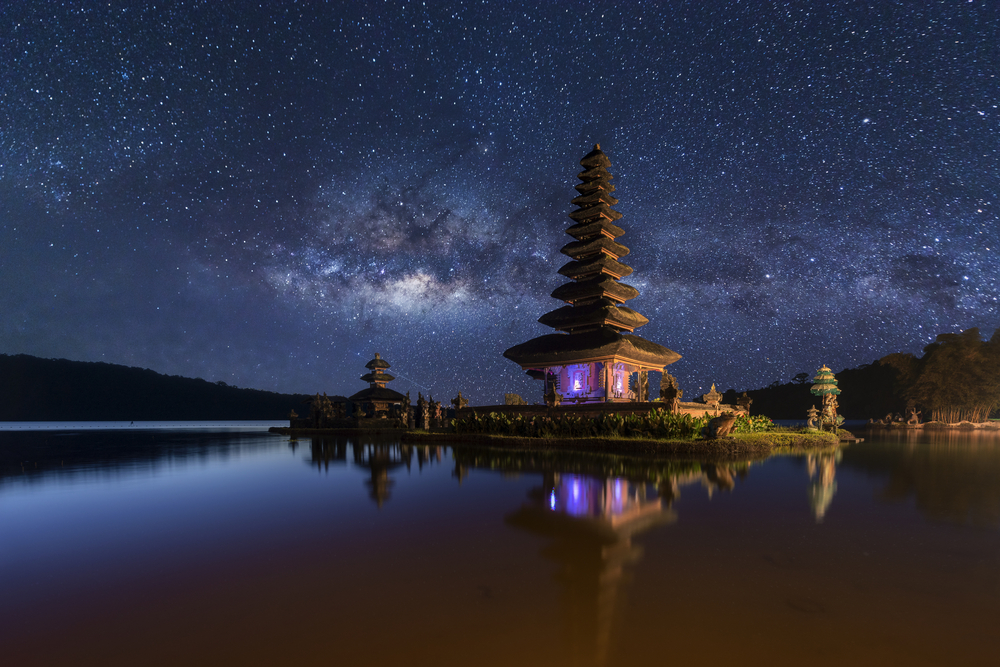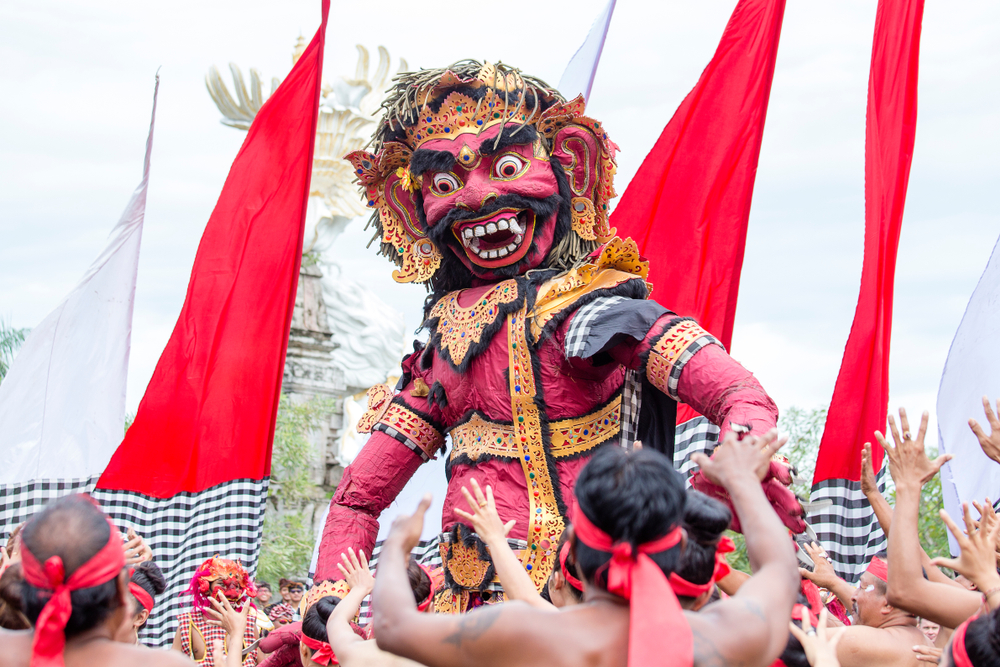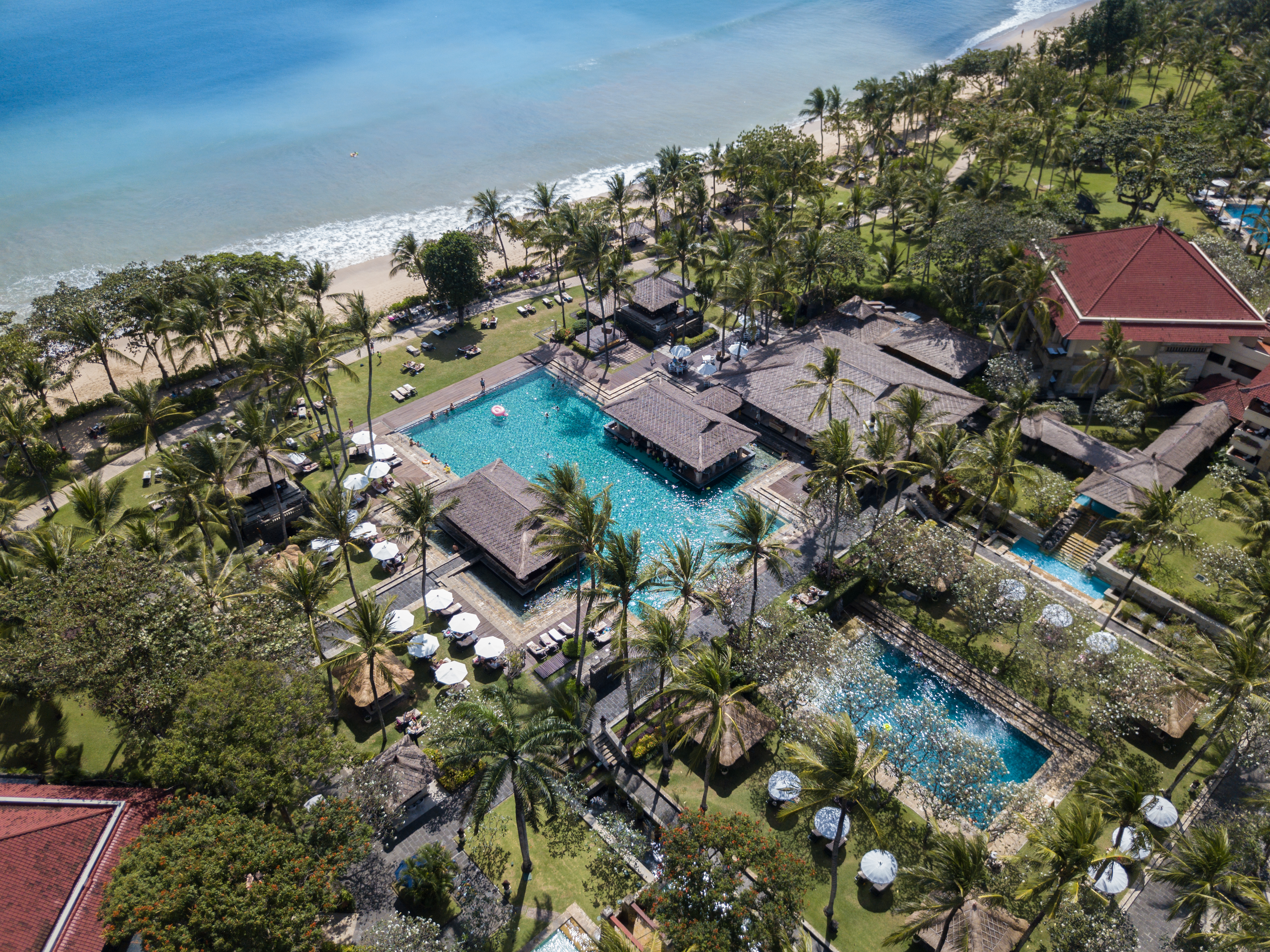Once a year, the island of Bali completely shuts down. Every shop is closed, there isn’t a car or motorbike to be seen on the usually bustling streets, and at night the island descends into an inky blackness with no lights or fires to be seen. Even the entire airport shuts down on this day with no flights landing or taking off for 24 hours.
This day, known as Nyepi, is unique to Bali and marks the first day of the New Year according to the Saka Balinese calendar. As a year on this calendar is 420 days, it falls on a different date each year – in 2018, Nyepi falls on the 17th of March.
What Happens On Nyepi?
Nyepi is an extremely special time to be on the island for both locals and visitors alike. An important Hindu celebration, the day is reserved for prayer, meditation, and fasting for the Balinese. Tourists are free to do as they wish on this day, but must stay indoors and make sure that any lights cannot be seen from the outside. Any curious individuals attempting to explore the empty streets will be swiftly sent back to their homes or hotels by the Pecalang traditional village security men.
While being confined inside might seem boring to those who have never experienced Nyepi, the reality is quite different. The clear air and silence from a whole island without traffic is something that must be experienced to be truly appreciated, and most visitors to Bali over Nyepi find the whole experience to be quite memorable and profound.
As night falls, the absence of artificial light means that the universe puts on an impressive display, with millions of stars visible and brighter than most people will have ever seen before.
Nyepi Rituals and the Ogoh Ogoh Parade
The days leading up to Nyepi are an extremely busy period for the Balinese, with a number of ceremonies that must be performed for purification and to ensure good luck and fortune for the year ahead. This is definitely a great time for photographers who will have no shortage of impressive scenes to capture.
Melasti is the first major ceremony, usually three or four days before Nyepi. The Melasti ceremony is always held on a beach and entire villages make a pilgrimage to their closest beach to perform a purification ritual, everyone wearing traditional adat clothing in white.
The night before Nyepi is possibly the most exciting and spectacular time to be on the island as each village will hold its own Ngrupuk parade with ogoh ogoh in order to draw out and banish malevolent spirits The ogoh ogoh are large statues made from bamboo and papier-mâché or styrofoam, mostly representing monsters from Hindu mythology. They’re made by the young men in each village for months beforehand and paraded down the main street of each village as night falls, often headed-up by the young women of the village carrying flaming torches.
At several points in the procession, the ogoh ogoh are spun around three times in order to confuse the spirits. At the end of the parade, the effigies are ritually burned, although this practice is becoming less common in recent years. The ogoh ogoh parade is always accompanied by traditional high-energy music provided by the baleganjur gamelan – a marching band of drums and gongs that also can be heard at cremation processions.
Back in the village, each household will also be making as much noise as possible – shouting and banging pans. It’s believed this chases out any lingering spirits before a cleansing ceremony is performed in each home on Nyepi eve.
Where to Stay and What to Do Over Nyepi
If you’re visiting Bali over Nyepi, you’re incredibly lucky to have the chance to witness this spectacle.
Hotels and Resorts operate as usual and you’ll be able to explore the grounds and use the swimming pool. In fact, many non-Hindu residents of Bali opt to book themselves into a hotel such as the InterContinental Bali Resort over Nyepi so they can enjoy the facilities.
Restaurants inside large hotels will also remain open but if you’re staying in a small homestay or self-catering villa, you’ll need to make sure you have enough food and provisions to last you 24 hours.
On Nyepi eve, the ogoh ogoh processions will start around sunset. Most villages display the ogoh ogoh on the community football field or a designated road from the morning, so you’ll have the opportunity to see them in close-up and get some good photos.
The Nyepi curfew officially lasts from 6am on Nyepi day (17th March this year) until 6am the following day. However, traffic gets very busy on Nyepi eve and many roads will be blocked for the ogoh ogoh processions. It’s therefore best to avoid travelling too far from your accommodation (heading out on foot if possible) and aiming to be back after the parades finish in the early evening.
Wherever you are in Bali for Nyepi, and whether you use the day for relaxation and indulgence, or introspection and meditation, remember to step outside and take a look at those incredible stars before you turn in for the night. It’s a sight and experience you’re sure to remember forever.





